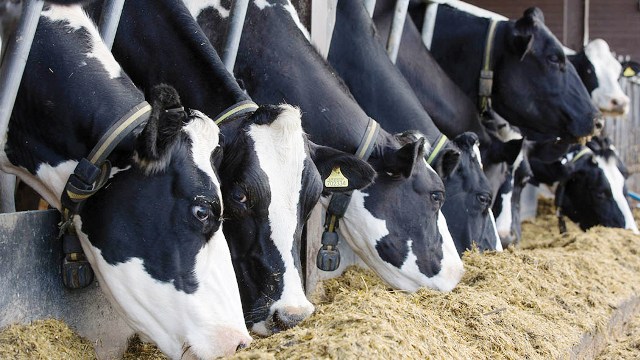The use of sodium humate as feed in animal feeding has demonstrated long-standing benefits. Until the 1950s and 1960s, they were used in the form of peat. Sodium humate covers the mucosa and binds toxins and microorganisms, which are then excreted. They should also be considered to have anti-inflammatory effects, have astringent effects, and enhance the animal’s immune system. In many applications, sodium humate has the potential to complement or even replace antibiotics. Currently, sodium humate is mainly derived from oxidized brown coal.
Sodium humate is a concentrated, water-soluble feed grade sodium sulfate in the form of crystalline granules. It can feed livestock (pig, poultry and cattle) or as a drinking water additive to stimulate the immune system. The intestinal flora is stabilized by immobilizing toxins and harmful substances in animal feed and by forming a protective film on the surface of the gastrointestinal mucosa. The appetite of the animals also increases, which in turn increases feed intake. Huminfeed improves feed conversion and ultimately promotes weight gain.
origin
Sodium humate is obtained by alkaline extraction of highly oxidized German lignite source (leonardite) which is produced by decomposition of organic matter. Leonardite originates from the chemical and biological humification of plant matter and the high biological activity of microorganisms.
advantage
Sodium humate is a sodium humate salt obtained by alkaline extraction of highly oxidized lignite. It is easy to handle and transport. It has been explored in veterinary medicine and used in animal husbandry for more than 30 years.
Sodium humate is classified as non-toxic when administered orally to warm-blooded animals. There are no obvious side effects and there is no known allergy or drug resistance in the case of conventional oral applications. Due to its basic chemical structure, sodium humate is neither teratogenic nor mutagenic. It also does not have any carcinogenic or embryotoxic effects. Since there is no high resorption rate in the gastrointestinal tract, no waiting time is observed after oral administration. In the long-term trial (120 days), different doses of HuminFeed® WSG were used prophylactically for calves and cattle, with a 4%-10% increase in body weight compared to the control group.
Improve feed conversion, promote weight gain, and reduce production costs. Can be used as an alternative to antibiotic growth promoters.
Its application to different species results:
pig:
Reduce the risk of weaning and pre-fertility diarrhoea due to feed changes and regrouping.
Improve feed conversion to increase weight
Reduce ammonia emissions and odors
can increase milk production and sow reproduction rate
poultry:
Reduce the sensitivity of broilers and turkeys to stress
Improve immunity and promote growth
Improve feed conversion
Reduce ammonia emissions and odors
Cattle:
Reduce the risk of diarrhoea in the first month and increase vitality in calves
Reduce the risk of mastitis and high somatic cell counts in dairy cows.
Improve feed conversion
Reduce ammonia emissions and odors
Instructions for use
For all livestock species, mix with feed or drinking water.
For calves, mix them with milk or formula for the first 30 days after birth. It can be used in automatic milk powder feeders.
feed:
2-3 kg per ton of feed
drinking water:
1-2 kg per 1000 liters of drinking water
Milk or formula:
10 grams per calf per day
body weight:
50-70 mg per kilogram of body weight per day
Sodium humate is used as a feed additive.
Feed additives based on humic agents have been certified and applied in many countries. The addition of humate to pig feed (including water or milk solution prepared 60 days prior to use) resulted in an increase in live weight of 2.5 kg.
The sodium humate additive helps prevent and treat gastrointestinal disorders, greater immune resistance, 20-30% reduction in cattle losses, better forage assimilation, and a 10-20% reduction in feed-specific consumption. The sodium humate additive also helps to improve the taste of meat and dairy products. In addition, they can alleviate the stress of cattle caused by industrial conditions managed by livestock, strengthen hair, enhance agility and appetite, and promote the rapid and healthy growth of animals.
The addition of humic agents to mixed feeds, drinking water, premixes or polymers is the most practical method. As an effective humus preparation, it can be mixed with mineral feed additives. For example, sodium lignin containing humic shells or a mechanical mixture with defluorinated phosphate

